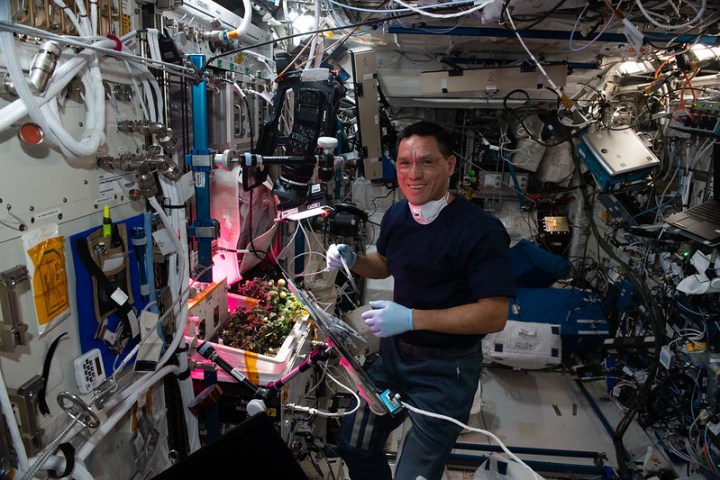In a delightful lost and found mystery, astronauts on board the the International Space Station (ISS) have finally located a single tomato that was lost somewhere in the station for eight months.
One of the challenges of living in microgravity is that things don’t stay where you put them. When astronauts go outside the ISS on spacewalks, for example, they have to use tethers to keep themselves and their tools from floating away. Inside the station, they have much more freedom of movement, but the problem of things floating away still exists. Just ask astronaut Frank Rubio, who lost the infamous tomato earlier this year.

The tomato was part of the ongoing experiments into growing crops on the ISS, which have included growing chilies, kale, radishes, and more. The crewmembers even get to eat some of the fruits of their labor. But when NASA’s Rubio went to enjoy his share of the harvest from the station’s tomato plants in March, his dwarf tomato floated away before he could enjoy it.
As reported by space.com, Rubio discussed the lost tomato in a livestream following his return to Earth in September after a record-breaking stay in space. “I spent so many hours looking for that thing,” Rubio said. “I’m sure the desiccated tomato will show up at some point and vindicate me, years in the future.”
And now, finally, the tomato has reappeared. In another livestream celebrating the ISS’s 25th anniversary, NASA astronaut Jasmin Moghbeli addressed the troublesome tomato: “Our good friend Frank Rubio, who headed home [in September], has been blamed for quite a while for eating the tomato. But we can exonerate him. We found the tomato.”
Rubio joked that he had spent hours and hours looking for his lost prize, as fresh fruits and veggies are highly prized by astronauts who live primarily off prepackaged foods. Growing foods in space is important not only for astronauts’ physical health, but is also thought to be important for mental health and well-being.
The crop that produced the tomato was the final harvest from the Veg-05 experiment, which saw astronauts growing salad crops to experiment with the types of fertilizer and the levels of light that are best for growing vegetables in orbit.



